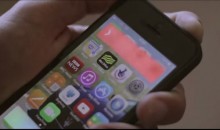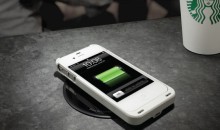Small Smartphones: the future of mobile?
Like all things retro, is a return to smaller mobile phones on the cards? Recent years have seen a seeming arms race for bigger and bigger smartphones, with each successive Samsung, HTC and Nokia hero device looking to go that little bit bigger. Even Apple, formerly the kings of maintaining their own strategy, have joined the race of late.
However, this increase in screen size has brought about a couple of previously ignored downfalls: battery drain and cumbersome size in tighter and tighter pockets.
As crazy as it seems — and hear me out here — might we see a return to smaller, less feature-packed mobile phones very soon?
With the increasing uptake of tablets and the growing trend toward “phablets” (phones merging with tablets), it has become apparent that consumers want to experience the web on bigger screens. Of course though, those big screens chew up a lot of battery life and we are seeing more and more people complaining of poor battery performance on their devices.
Who hasn’t been in a scenario where you’re out and find that you have to preserve the last 5% of your battery in case you need to make an emergency call late in the evening? The problem is, that damn screen continues to kill that remaining juice, along with all of the background processes checking your email and running apps.
Back in the day the trend was toward smaller and smaller phones. Phones that would fit in your pocket, or easily into a lady’s purse. With the current size of smartphones, a female would have no way of easy packing that away for a night out clubbing in the same way as was previously possible.
Let’s face it — at the end of the night do you need a device that runs the whole array of apps, or do you just want something that can call a taxi, text your friends to ask where they are, and possibly call a loved one to let them know that you’re safe?
The way I see it, there is every chance that a market will open up for super small phones with long battery life — ones that simply make calls and send texts. They could possibly have the ability to play MP3s too (much less power intensive than surfing the web on a bright screen) — for the journey home when you know that you really don’t need the rest of that battery. These phones would have simple screens that use very little power (possibly similar to the technology used in e-readers like the Kindle).
No doubt people would want them to look good too, right? So there would be plenty of competition to create the sleekest little mobile on the market. Consumers would use their tablet-type device when they want to surf the web (on the way to work, at home etc), but would leave this at home when the circumstances call for purely a compact mobile phone.
What about the Pebble, the MotoActv and the rumored Apple iWatch you may ask? Sure, all allow you to leave your cumbersome phone in your bag and just keep an eye on the incoming call ID via the screen of your watch. However this serves a totally different purpose to a small smartphone. For starters, these watches (currently) do not allow you to send texts or make calls. Even more than this, they require your phone to be present, with battery life, and they require the constant drain of battery through a bluetooth connection. In short, not what we are looking for in this type of scenario.
Will small smartphones replace the growing trend for bigger screens? Unlikely. Right now, it looks like big is best. However, there definitely is scope for smaller mobile devices to find their niche in the huge and important telecommunications market.
What do you think? Hit us up in the comments.





